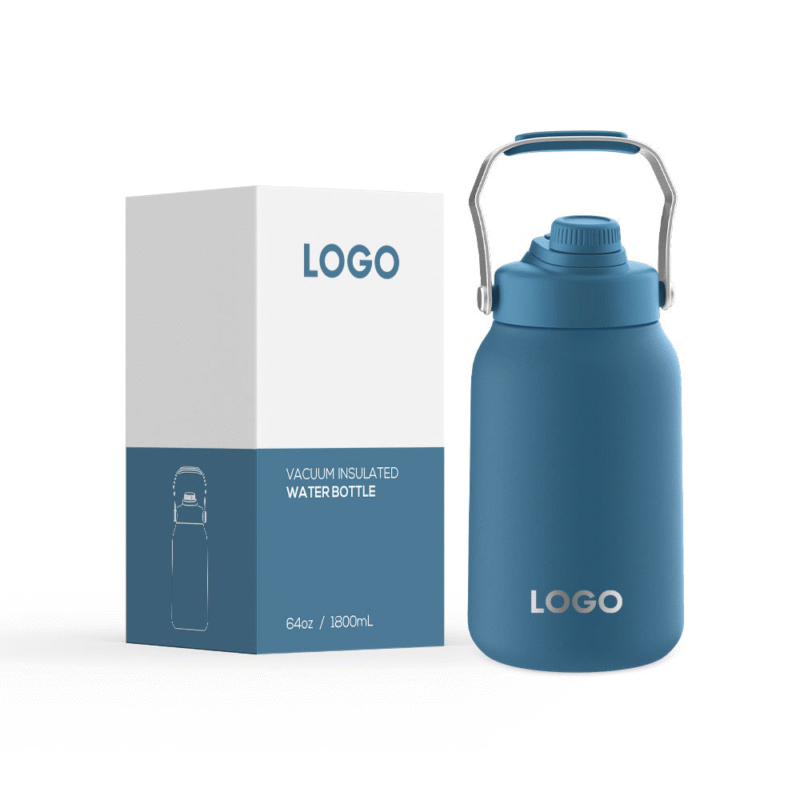Is drinking water from a stainless steel thermos harmful to human health?

Stainless steel thermoses, a common drinking vessel for modern people, have long drawn attention for their safety. To answer the question of “Is drinking from a stainless steel thermos harmful to the human body?” we need a comprehensive analysis from multiple perspectives, including materials science, production processes, and usage habits.

First and foremost, it’s important to understand that stainless steel thermoses that meet national food-grade standards are safe and harmless under normal use. Currently, mainstream stainless steel thermos linings on the market primarily utilize 304 stainless steel or the higher-standard 316 stainless steel. 304 stainless steel, a recognized food-grade steel, contains over 18% chromium and 8% nickel. These elements form a dense protective chromium oxide film on the surface, effectively preventing further oxidation and corrosion. 316 stainless steel, on the other hand, incorporates molybdenum, offering enhanced corrosion resistance, making it particularly suitable for acidic beverages.
The safety of stainless steel is based on strict production standards. According to my country’s “National Food Safety Standard for Stainless Steel Products” (GB 4806.9-2016), stainless steel utensils have clear limits for heavy metal migration. For example, the highly-regarded element chromium has a migration limit of 0.4 mg/dm². This standard value is determined under very stringent conditions—it requires boiling in a 4% acetic acid solution for 30 minutes and soaking for 24 hours. In contrast, the acidity of everyday beverages like tea and coffee is far lower than the experimental conditions and is typically not kept boiling for extended periods. Therefore, under normal use, the actual amount of metals like chromium released is negligible and well within the safety range.
It is important to note that the safety of stainless steel thermoses depends largely on the user’s purchasing decisions. Some low-quality products made from 201 stainless steel do exist on the market. This industrial stainless steel has a low nickel content and a high manganese content. Prolonged contact with acidic liquids can lead to excessive release of heavy metals like manganese. Therefore, consumers should carefully examine product labels when purchasing, looking for food-grade stainless steel markings such as “SUS304” or “06Cr19Ni10,” to avoid purchasing products without proper packaging or certification.
In addition to material selection, proper usage habits are also crucial. While stainless steel thermoses can hold a variety of beverages, it’s recommended not to store highly acidic or alkaline liquids, such as concentrated vinegar, carbonated beverages, and juice, for extended periods. Prolonged storage, especially in a sealed environment, can accelerate the release of metal ions. Regular cleaning and maintenance are also essential. It’s recommended to use soft cleaning tools and avoid using hard cleaning tools like steel wool to avoid damaging the protective oxide film on the surface.
In actual use, a qualified stainless steel thermos not only ensures safe drinking but also offers numerous practical advantages. Its excellent heat retention allows us to enjoy drinks at the perfect temperature regardless of season. Its durability is strong, with a normal service life of several years. Its portability makes it an ideal drinking utensil for modern travelers. These advantages make stainless steel thermoses an environmentally friendly alternative to plastic bottles and paper cups. In summary, as long as we choose a genuine product that meets standards and develop good usage habits, stainless steel thermoses are undoubtedly safe and reliable drinking tools. Consumers should choose reputable brands and carefully read product descriptions to avoid buying inferior products out of cheapness. Only in this way can we truly enjoy the convenience and health benefits of stainless steel thermoses.



